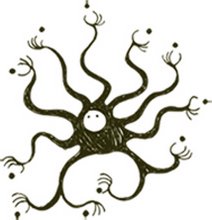The symbolic term “Year 1”, was created in 800 ECHS as an effect of the work of the strongest brains of that time, known also like The first thinking movement. It was possible after the invention of paper. In this year the Council decided to write down every law, which was established so far. Members of the scientists´ and spiritual village, which was also the historical centre, counted the years, and finally established enrisouma’s calendar. They also made the first historical research, which is known in the historiography under the title “Songs of the Enrisuoma”. The word “songs” it’s not use accidentally. Till 800 ECHS, all the laws, stories, news were received by songs or poetry. The first codex, it’s a compilation of 27 songs, written as poetry, within the most important are:
Song about unbreakable law,
Song of the little ones,
Song of the joyful month,
Song of the growing trees,
Song of love.
The first song was the first law ever made - §7. Every one has a responsibility to listen and can be sure that his opinion will be heard. Comes from gatherings in the central place, where existed special time, when everyone could speak, in the situations which needed some decision, the decided as a group. After the settlement of the first villages, the inhabitants created the first Council of the Island (45 ECHS). The council of the island was made by 3 representatives of each village, each voice meant the same, was equally important. After the settlement of the 8th village (1007 ECHS), each village had, and still has, 1 representative.
The first Enrisoumalainen didn’t exclude kids and youth from important gatherings. As the Song of the little ones comments: “Little ones don’t hesitate to sing, to play and to say things that adults would never think about”. It also exists as a law of the island (§6. Everyone has to respect a little ones; everybody has a right to be little).
The Song about the joyful month was talking about special times in the island, within which, the working life on the island stops. The two last laws will be described below.
In the ancient times, the inhabitants of the island started to build separate villages, to organise better functioning of the island. The place that the inhabitants occupied before, became the “mystical – historical” village. First new village was the “Fishermen village”, named like that “20 long songs after song of equality”, which means about 20 years after first law was established (about this below). Then the “Farmer’s village” was established. It was very small in the beginning of the era, but the biggest one in the beginning of modern ages, est. 35 ECHS. Few years later, in 39 ECHS, a “long song” said about Forest keepers Village. Musicians, who were also historians and messengers, settled in their own village about 187 ECHS. Their place couldn’t afford so many people as other villages, so people whose duty was writing, and going across the island with the messages, built their own “Communication Village” in 221 ECHS.
According to the legends, Enri gave a system of writing signs for the Enrisoumalainens. When we look at this system from a modern perspective, we can see that this is a classic example of symbolic signs. Island’s historians don’t have any example of writing before 759 ECHS, because the only material that was used as “paper”, were the leaves, so it’s obvious that none of these “paper-leaves” survived to the contemporary times. Whatsoever, symbolic writing was still in use for about a century from the invention of the paper.
Enrisuoma’s never used ceramic for writing. The system of signs was in use only on the very important times. That behaviour rests in the mentality of the island’s society up until now. They don’t produce useless papers, as we can observe in modern civilisations. Other impact of first writing system we can observe in constitution - Law §9. Everybody has a right to sow flowers and trees. Council wants to assure that there will always be material for important messages. After the “paper – revolution”, the law was still very pragmatic, because paper was, and still is, made from natural substances.
The strong thinking movement brought other fruits, which was a new law (§11. Everybody has to remember that life is a game that you can’t restart). Working process on the calendar, made people thinking about the life and death, about their role in the world. Keeping every proportion, we can say that the beginning of early modern ages was mentally similar to medieval ages in Europe.
Period in culture between 221 – 1007 is called as The Enrisuoma’s Classical époque. Other term existing in historiography is Trinity of arts. According to the classic definition, arts should be universal, more than one way of communication with other people should be found. Pieces of different disciplines of art should coexist with each other, especially music and dance. The dances were characterized of a natural style, imitating nature (wind, fire, rain). The painting of these times was very informative, illustrated songs – stories, news, laws etc. After 800 ECHS, more abstract themes, this started to be dominant after 976 ECHS.
Culture played a very big role in the every day life of Enrisoumalainen. Sharing the food in the council place was always a cultural event, with lots of music and dances. In the oldest written sources, those days are labelled as joyful days. The Council decided to emphasize the meaning of the events, they became a law, and later part of the constitution (§3. Everybody has a right to smile).

No comments:
Post a Comment